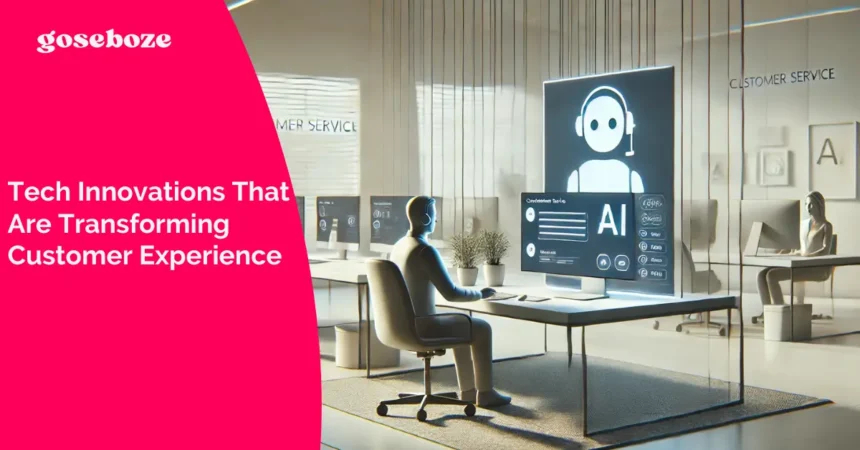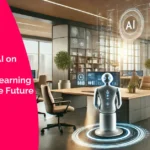With rapid advancements in automation, artificial intelligence, and machine learning, companies are seeking new ways to improve customer experiences.
Customers today expect fast, seamless, and personalized interactions, whether they are making a purchase, reaching out for support, or simply browsing a website. As a response, businesses are adopting innovative tech solutions that enhance efficiency and keep customers satisfied.
Staying competitive means implementing these technologies and integrating them into everyday operations. Companies can focus on streamlining processes with automation or using advanced algorithms to predict customer needs. Tech innovations are reshaping customer service across industries.
Let’s explore some of the most impactful tech innovations that are transforming customer experiences.
- Predictive Customer Service with Machine Learning
Predictive customer service is an innovation that is transforming how businesses meet customer needs. Powered by machine learning, predictive systems analyze past customer behavior to forecast future actions.
For example, if a customer frequently experiences a particular issue with a product, a machine learning model can predict when that issue might occur again and offer a solution before the customer even realizes there’s a problem. This proactive approach helps companies resolve issues quickly and create a smoother experience for the customer.
In addition to solving problems before they arise, predictive systems can also anticipate customer needs. Machine learning algorithms can analyze patterns in customer data and use that information to recommend products or services that match their preferences. For instance, if a customer frequently purchases certain items, a predictive system can suggest similar or complementary products, streamlining the shopping experience.
- RPA for Enhancing Customer Efficiency
Robotic process automation solutions are proving immensely beneficial in the way businesses handle customer-related tasks. RPA automates routine, repetitive tasks such as data entry, order processing, and resolving common customer service queries. Apart from speeding up processes, this also reduces human errors that can frustrate customers.
For instance, when a customer places an order online, RPA can handle the backend operations like updating inventory, confirming the order, and scheduling the shipment, all without human intervention. This level of automation promises faster, more accurate services that keep customers happy.
Read Also: The Impact of AI on Education: Transforming Learning and Shaping the Future
Moreover, by automating these time-consuming tasks, businesses free up their staff to focus on more complex customer interactions that require a personal touch. This shift allows employees to tackle unique customer needs or resolve issues that demand critical thinking rather than being burdened with repetitive work. As a result, customers receive faster service on routine matters while also getting better attention on more complex inquiries. RPA solutions ultimately contribute to a smoother and more efficient customer experience.
- Voice Commerce for Hands-Free Shopping
Voice commerce is an emerging trend that is making shopping more convenient for customers. According to a forecast by eMarketer, the number of Americans using voice assistants is expected to grow from 149.1 million in 2024 to 162.7 million by 2027.
Using voice-activated devices like Amazon Alexa or Google Assistant, customers can place orders, check delivery statuses, and even search for product information without needing to interact with a screen. This hands-free shopping experience appeals to customers who want speed and convenience. Whether at home, in the car, or on the go, voice assistants make it possible to interact with brands effortlessly.
What makes voice commerce stand out is its potential to create a more natural, conversational interaction between customers and businesses. Instead of scrolling through menus or websites, customers can simply ask their voice assistant to perform a task. This technology is still evolving, but it’s already becoming a popular way for brands to connect with customers more intuitively. As more companies integrate voice commerce into their platforms, customers will likely experience even more seamless interactions, from personalized product recommendations to quick order placements.
- Biometric Authentication for Seamless Security
Biometric authentication is changing how customers access services by making security both stronger and simpler. Rather than relying on passwords or security questions, customers can use fingerprints, facial recognition, or other biometric data to verify their identity.
This method improves security and also speeds up the process, making tasks like logging into accounts or completing payments faster and more convenient for customers. For example, mobile banking apps often use fingerprint scanning or facial recognition; this way, users can access their accounts instantly without needing to remember passwords.
This innovation reduces friction in the customer journey, as it minimizes the number of steps needed to complete a transaction or access services. Customers appreciate the ease and security that biometric authentication offers, particularly when they don’t have to worry about forgotten passwords or potential data breaches. A Visa survey revealed that 86% of participants favored using biometrics for identity authentication over traditional passwords. As this technology becomes more widely adopted, businesses can offer their customers a higher level of security while making the experience more user-friendly.
- Customer Experience Optimization with AI-Driven Sentiment Analysis
AI-powered sentiment analysis is helping businesses understand how customers feel about their products or services in real-time. This technology scans customer reviews, social media posts, and surveys to determine whether feedback is positive, negative, or neutral.
With this information, businesses can quickly address customer concerns, make adjustments to their services, or even highlight areas where they are performing well. For example, a company might notice a spike in negative feedback about a new product and can respond promptly to resolve the issue.
The use of AI for sentiment analysis also allows businesses to provide more personalized customer experiences. Understanding how customers feel helps companies tailor their communication and offerings, improving overall satisfaction. When businesses are responsive to customer feedback and make adjustments based on real-time sentiment data, customers feel heard and valued.
- Hyper-Personalized Experiences Using Edge Computing
Edge computing is another innovation that is transforming the customer experience by enabling real-time personalization. Unlike traditional cloud computing, which processes data in centralized locations, edge computing processes data closer to the customer, at the “edge” of the network.
This reduces latency and allows businesses to provide instant, personalized responses based on real-time data. For instance, a retailer can use edge computing to offer location-based promotions to customers as they enter a store, enhancing their shopping experience with timely and relevant offers.
This level of hyper-personalization helps businesses engage with customers in a more meaningful way. Whether it’s providing instant product recommendations or offering services tailored to specific customer preferences, edge computing makes it possible to create interactions that feel personal and immediate. As a result, customers enjoy a more seamless and tailored experience, which builds stronger connections with the brand.
Tech innovations like robotic process automation solutions, voice commerce, biometric authentication, and AI-driven sentiment analysis are reshaping how businesses connect with their customers. These technologies make interactions faster, more secure, and highly personalized, promising better overall customer experiences. The future of customer experience lies in the continued integration of these advanced technologies that offer a more intuitive and satisfying experience for all.








